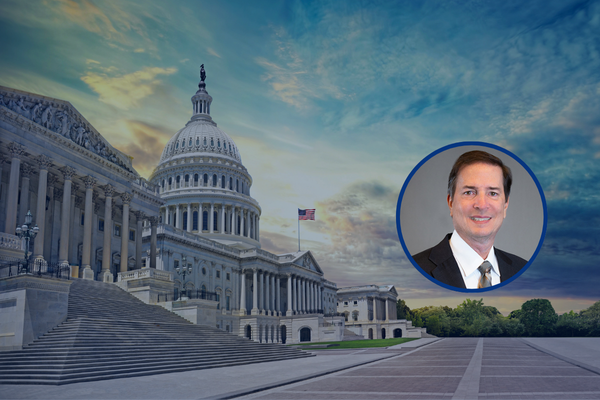
Is it time to evaluate your overdraft program disclosures?
Categories:
Similar to skipping annual doctor and dentist checkups, putting off regular overdraft program disclosure evaluations until the next rule change or updated guidance can result in major and costly problems. It’s nearly always easier and less expensive to prevent an issue rather than try to cure it.
Although the most recent formal guidance took place in 2010, much has occurred in the overdraft space since then. Some community banks and credit unions made temporary changes to their overdraft programs during the pandemic. Meanwhile, increased focus on overdraft fees by the media and legislators has put this financial service in the spotlight, inviting increased scrutiny.
When was the last time you took a formal, objective look at your overdraft solution disclosures and procedures?
The Consumer Financial Protection Bureau (CFPB) has signaled its intention to ramp up supervision activity around fair lending laws and unfair, deceptive and abusive acts and practices (UDAAP). In addition to closely examining decision-making practices in pricing, advertising and other areas, the Bureau examiners will:
“…require supervised companies to show their processes for assessing risks and discriminatory outcomes, including documentation of customer demographics and the impact of products and fees on different demographic groups. The CFPB will look at how companies test and monitor their decision-making processes for unfair discrimination, as well as discrimination under [the Equal Credit Opportunity Act].”
Other organizations will also focus on overdraft programs to make sure they serve consumers’ best interests. For example, the National Credit Union Administration’s (NCUA) 2022 Supervisory Priorities lists examiner focus on overdraft programs, among other areas. Financial institutions can expect examiners to request information about their overdraft program’s policies, procedures, monitoring tools and consumer communications.
Is your financial institution ready for this type of in-depth audit—or are you leaving yourself open to risk?
An overdraft program should always be reasonable, responsible and reliable. High-level areas to evaluate regularly include examiner feedback, regulator and consumer expectations, and recent class-action lawsuits. There are specific areas that can raise red flags for overdraft regulators—and potential interest from lawyers pursuing class-action lawsuits.
Three overdraft disclosure areas you cannot afford to overlook
- Re-presentment Fees: Charging a consumer more than one NSF fee for the same declined transaction, without adequate disclosures, where the merchant re-presents the same transaction to the banking institution in a second or third attempt to collect funds.
- Available Balance: Whether language about if items are paid against an actual (or ledger) or available balance and how these differences affect consumers’ ability to avoid incurring overdraft fees.
- Authorize Positive, Settle Negative Transactions (AP/SN or Good Funds module): Charging consumers an overdraft fee even though the consumer had a positive account balance sufficient to cover the transaction at the time it was authorized by the institution.
When was the last time you evaluated your overdraft program to ensure it includes:
- Consumer-friendly practices
- Compliant, regular disclosures with clear, easy-to-understand wording
- Ongoing, up-to-date account holder communication
Is your compliance team prepared for this type of examination?
Your compliance team has the extraordinary responsibility of managing regulations connected with the entire range of your financial institution’s products and services. The weight of this workload can leave little to no time for keeping up with the ever-changing best practices that examiners look for.
The best solution for many banks and credit unions is to take this important but time-consuming task off their team’s plate. An overdraft expert can perform a deep dive into your overdraft program and its disclosures and provide recommendations on how to bring it in line with today’s regulatory expectations. The additional support can provide you with a better understanding of your program’s usage and best practices, including how to keep your program consumer-friendly.
A trusted partner and expert can fill gaps that your team may not have the time or resources to gather
- Examiner feedback: What have other financial institutions been told? A JMFA expert has information on this topic from FIs across the nation.
- Regulator and consumer expectations: What are regulators and consumers looking for in an overdraft program? Our experts have their ear to the ground when it comes to the latest feedback and expectations from both groups.
- Class-action lawsuits: What claims and decisions are being made in the suits filed daily across the nation? JMFA follows this information closely and can use these rulings to recommend adjustments that will help a financial institution avoid similar issues.
With time and personnel constraints, it’s wise to commit to an ounce of prevention instead of waiting to perform a potentially very costly ‘pound of cure.’
ADVANTAGE’s thorough overdraft program analysis and evaluation can ensure your overdraft program earns a clean bill of health from examiners and account holders alike.
To address your evolving needs and answer questions on overdraft compliance and best practices for delivering more value to your account holders, contact the experts at ADVANTAGE, powered by JMFA.
ABOUT THE AUTHOR
Cheryl Lawson has more than 30 years of experience in information technology and financial operations, as well as consulting, communications, training and project management. She serves as ADVANTAGE’s principal compliance liaison for regulatory requirements of overdraft services, including consumer protection issues, and strategies that enhance safety and soundness.




